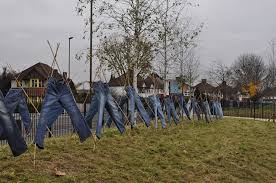I once read that you could tell what colour would be in style by looking at the river in Milan (Italy). It may or may not still be true in Milan but it seems that the practice of using the river for dumping the fashion industry’s wastewater is still current in at least some parts of the world according to a Nov. 10, 2016 news item on Nanowerk featuring Juan Hinestroza’s work on textiles that clear pollution,
A stark and troubling reality helped spur Juan Hinestroza to what he hopes is an important discovery and a step toward cleaner manufacturing.
Hinestroza, associate professor of fiber science and director of undergraduate studies in the College of Human Ecology [Cornell University], has been to several manufacturing facilities around the globe, and he says that there are some areas of the planet in which he could identify what color is in fashion in New York or Paris by simply looking at the color of a nearby river.
“I saw it with my own eyes; it’s very sad,” he said.
Some of these overseas facilities are dumping waste products from textile dying and other processes directly into the air and waterways, making no attempt to mitigate their product’s effect on the environment.
“There are companies that make a great effort to make things in a clean and responsible manner,” he said, “but there are others that don’t.”
Hinestroza is hopeful that a technique developed at Cornell in conjunction with former Cornell chemistry professor Will Dichtel will help industry clean up its act. The group has shown the ability to infuse cotton with a beta-cyclodextrin (BCD) polymer, which acts as a filtration device that works in both water and air.
A Nov. 10, 2016 Cornell University news release by Tom Fleischman provides more detail about the research,
Cotton fabric was functionalized by making it a participant in the polymerization process. The addition of the fiber to the reaction resulted in a unique polymer grafted to the cotton surface.
“One of the limitations of some super-absorbents is that you need to be able to put them into a substrate that can be easily manufactured,” Hinestroza said. “Fibers are perfect for that – fibers are everywhere.”
Scanning electron microscopy showed that the cotton fibers appeared unchanged after the polymerization reaction. And when tested for uptake of pollutants in water (bisphenol A) and air (styrene), the polymerized fibers showed orders of magnitude greater uptakes than that of untreated cotton fabric or commercial absorbents.
Hinestroza pointed to several positives that should make this functionalized fabric technology attractive to industry.
“We’re compatible with existing textile machinery – you wouldn’t have to do a lot of retooling,” he said. “It works on both air and water, and we proved that we can remove the compounds and reuse the fiber over and over again.”
Hinestroza said the adsorption potential of this patent-pending technique could extend to other materials, and be used for respirator masks and filtration media, explosive detection and even food packaging that would detect when the product has gone bad.
And, of course, he hopes it can play a role in a cleaner, more environmentally responsible industrial practices.
“There’s a lot of pollution generation in the manufacture of textiles,” he said. “It’s just fair that we should maybe use the same textiles to clean the mess that we make.”
Here’s a link to and a citation for the paper,
Cotton Fabric Functionalized with a β-Cyclodextrin Polymer Captures Organic Pollutants from Contaminated Air and Water by Diego M. Alzate-Sánchez†, Brian J. Smith, Alaaeddin Alsbaiee, Juan P. Hinestroza, and William R. Dichtel. Chem. Mater., Article ASAP DOI: 10.1021/acs.chemmater.6b03624 Publication Date (Web): October 24, 2016
Copyright © 2016 American Chemical Society
This paper is open access.
One comment, I’m not sure how this solution will benefit the rivers unless they’re thinking that textile manufacturers will filter their waste water through this new fabric.
There is another researcher working on creating textiles that remove air pollution, Tony Ryan at the University of Sheffield (UK). My latest piece about his (and Helen Storey’s) work is a July 28, 2014 posting featuring a detergent that deposits onto the fabric nanoparticles that will clear air pollution. At the time, China was showing serious interest in the product.


